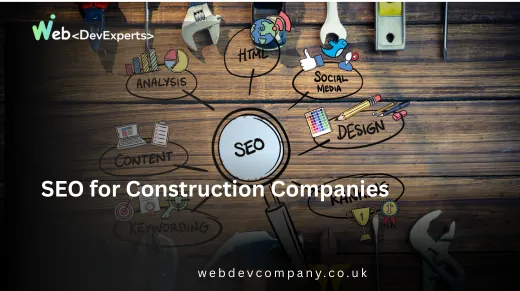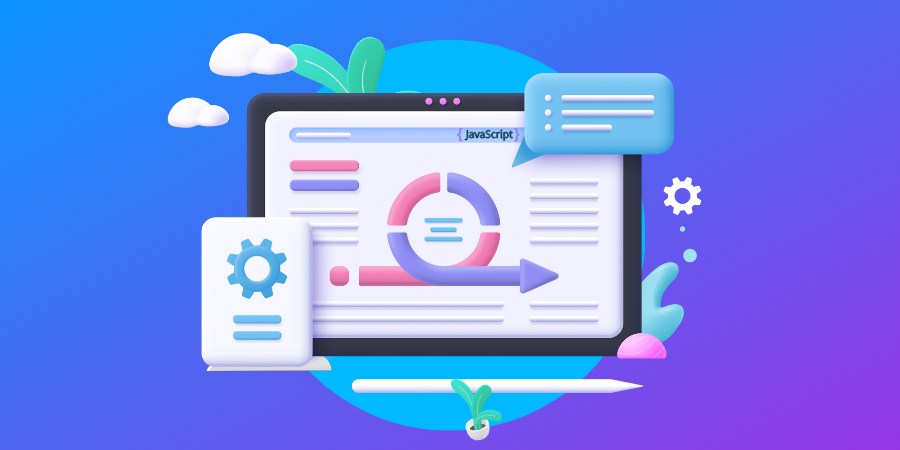In today’s digital world, having a well-optimized Shopify store is crucial for standing out in the competitive online market. If you’re based in Bradford and looking to enhance your Shopify store’s visibility, understanding the nuances of SEO for Shopify is key. This article will guide you through essential strategies, tips, and tricks to boost your store’s search engine ranking and drive more traffic.
The Significance of SEO for Your Shopify Store
Before diving into the specifics, let’s discuss why SEO (Search Engine Optimization) is vital for your Shopify store. Imagine you’ve just launched a boutique selling unique fashion items. You’ve invested in high-quality products, but if your store isn’t visible on search engines like Google, potential customers won’t find you. That’s where SEO comes in.
SEO helps your store appear higher in search engine results pages (SERPs), making it easier for potential customers to discover your products. It’s like having a storefront in the busiest shopping street, rather than being tucked away in a quiet alley.
Knowing the Fundamentals of Shopify SEO
To get started with Shopify SEO, it’s important to grasp the basic concepts:
- Keywords: These are the terms your potential customers use when searching for products. For example, if you sell handmade jewellery, relevant keywords might include “handmade jewellery,” “unique necklaces,” or “artisan rings.”
- On-Page SEO: This involves optimizing individual pages on your site. Key elements include titles, meta descriptions, headers, and image alt text.
- Off-Page SEO: This includes strategies to build your site’s authority, such as acquiring backlinks from reputable sites.
- Technical SEO: Ensures that your Shopify site is technically sound and search-engine friendly. This includes site speed, mobile responsiveness, and proper indexing.
Step-by-Step Guide to Optimizing Your Shopify Store
1. Conduct Keyword Research
Keyword research is the foundation of any successful SEO strategy. Use tools like Google Keyword Planner or Ahrefs to find keywords relevant to your products. For a Bradford-based Shopify store, you might focus on keywords that include “Bradford” along with your product types.
Example: If you sell vintage furniture, you might use keywords like “vintage furniture Bradford” or “antique chairs in Bradford.”
2. Optimize Your Product Pages
Each product page on your Shopify store should be optimized for search engines. Here’s how:
- Title Tags: Ensure each product page has a unique title tag with relevant keywords. For instance, “Handmade Wooden Tables – [Your Store Name] – Bradford.”
- Meta Descriptions: Write compelling meta descriptions that include your primary keywords. This brief text appears in search results and should entice users to click.
- Headers: Use headers (H1, H2, etc.) to organize your content. Make sure they include relevant keywords naturally.
3. Enhance Your Site’s Technical SEO
Technical SEO is crucial for ensuring search engines can crawl and index your site effectively. Here are some tips:
- Site Speed: A slow-loading site can hurt your rankings. Use tools like Google PageSpeed Insights to analyze and improve your site speed.
- Mobile Optimization: Ensure your site is mobile-friendly. Shopify themes are generally responsive, but it’s worth testing your site on different devices.
- Sitemap: Submit your sitemap to search engines to help them understand the structure of your site. Shopify generates a sitemap automatically, which you can find at
[your-store-url]/sitemap.xml.
4. Build Quality Backlinks
Backlinks from reputable sites can boost your store’s authority. Consider:
- Guest Blogging: Write articles for other blogs or websites in your niche, including links back to your Shopify store.
- Local Directories: List your store in local Bradford directories and business listings.
- Partnerships: Collaborate with local influencers or businesses for mutual backlinking opportunities.
5. Monitor and Analyze Your SEO Performance
Regularly tracking your SEO performance helps you understand what’s working and where improvements are needed. Use tools like Google Analytics and Google Search Console to monitor your traffic, keyword rankings, and other vital metrics.
A Real-World Example: Success Story from Bradford
Let’s take the example of a Bradford-based Shopify store, Bradford Vintage Finds. Initially struggling with low visibility, they implemented the following SEO strategies:
- Focused Keyword Research: They targeted local keywords like “vintage furniture Bradford” and “antique finds in Bradford.”
- Optimized Product Pages: Enhanced titles, meta descriptions, and headers with relevant keywords.
- Improved Technical SEO: Increased site speed and ensured mobile responsiveness.
- Built Quality Backlinks: Partnered with local bloggers and listed in Bradford business directories.
Within six months, Bradford Vintage Finds saw a significant increase in organic traffic and sales, proving the effectiveness of a well-rounded SEO strategy.
Conclusion
Implementing SEO for Shopify in Bradford doesn’t have to be overwhelming. By following these steps—conducting thorough keyword research, optimizing your product pages, enhancing your technical SEO, building quality backlinks, and monitoring your performance—you can improve your store’s visibility and attract more customers.
Another link









106 Responses
Hello! Do you know if they make any plugins to help with SEO?
I’m trying to get my website to rank for some targeted keywords but I’m not seeing very good results.
If you know of any please share. Cheers! You can read similar article here:
Eco blankets
Its landscape is unrivalled for it has a stupendous wilderness, pristine scenery, snow capped peaks, spectacular 16th century monasteries and many other points of interest that are unique.
I enjoy looking through a post that will make people think. Also, thanks for allowing me to comment.
This is the right web site for anybody who would like to understand this topic. You realize so much its almost hard to argue with you (not that I actually will need to…HaHa). You certainly put a brand new spin on a topic that has been discussed for ages. Wonderful stuff, just wonderful.
Good post. I learn something new and challenging on blogs I stumbleupon everyday. It will always be useful to read through articles from other writers and use something from their websites.
Very good info. Lucky me I discovered your site by chance (stumbleupon). I have book-marked it for later!
1959 sequence in regards to the misadventures of a grey flying squirrel and a moose.
Hello there! This blog post could not be written much better! Looking through this article reminds me of my previous roommate! He constantly kept talking about this. I’ll forward this article to him. Fairly certain he’ll have a very good read. Thanks for sharing!
However, this was mostly because the town annexed nearby residential areas.
He then formally signed for the staff on 24 March 2010, becoming simply the third Indian to play outside of South Asia and the primary Indian to play in MLS.
The VanSickle family moved to Creston when Lee was 5 years outdated and he has been a resident there since that time.
Oct 26, 2024. Maumee, OH.
Becoming a member of formal classes, taking part in a whole lot of over the board chess, or becoming a member of an online club or class are all nice ways to earn expertise and match wits and expertise with players inside your range or are higher than you.
It’s hard to come by educated people for this topic, but you sound like you know what you’re talking about! Thanks
I wish I could write such articles, I can then increase traffic to your website. Please some tips on how to do it if it is a long phase process?
I must admit this post is very wonderful . Thanks once again for the push!
Many thanks for this info I has been hunting all Yahoo in order to locate it!
You made some decent points there. I looked on the internet to learn more about the issue and found most people will go along with your views on this website.
Many thanks for this particular tips I had been searching all Google to find it!
Real superb information can be found on web site.
I saw a lot of website but I think this one holds something special in it in it
Trop excitant de mater des femmes lesbiennes en train de se doigter la chatte pour se faire jouir. En plus sur cette bonne petite vid o porno hard de lesb X les deux jeunes lesbienne sont trop excitantes et super sexy. Des pures beaut de la nature avec des courbes parfaites, les filles c est quand v
Some of the images are not showing properly but I think that might be noscript, the web site still looks nice. I have been coming to this blog for a few weeks now and i’m really impressed with the content. What is the rss feed address?
I have been browsing online more than three hours today, yet I never found any interesting article like yours. It’s pretty worth enough for me. In my opinion, if all web owners and bloggers made good content as you did, the web will be a lot more useful than ever before.
Can I simply say what a aid to search out somebody who really is aware of what theyre talking about on the internet. You undoubtedly know methods to deliver a difficulty to mild and make it important. Extra people need to learn this and understand this aspect of the story. I cant imagine youre no more popular since you undoubtedly have the gift.
I’ve recently been meditating on the identical matter personally lately. Pleased to see somebody on the same wavelength! Nice article.
I was able to find good advice from your articles.
You actually make it seem so easy along with your presentation however I to find this topic to be actually one thing which I feel I’d by no means understand. It kind of feels too complicated and extremely vast for me. I’m looking forward on your subsequent put up, I will try to get the cling of it!
Ha ha… I was just surfing around and took a glimpse at these reviews. I can’t believe there’s still this much fascination. Thanks for crafting articles about this.
Hey there! This is kind of off topic but I need some help from an established blog. Is it hard to set up your own blog? I’m not very techincal but I can figure things out pretty fast. I’m thinking about creating my own but I’m not sure where to begin. Do you have any tips or suggestions? Appreciate it
This web page is really a walk-through its the details you wished about this and didn’t know who need to. Glimpse here, and you’ll certainly discover it.
Great blog. Many websites like this cover subjects that can’t be found in print.
Thank you a lot for sharing this with all of us you really recognize what you are speaking approximately! Bookmarked.
Howdy! This post couldn’t be written any better! Reading through this post reminds me of my previous roommate! He always kept talking about this. I’ll send this article to him. Fairly certain he will have a great read. Many thanks for sharing!
very good post, i certainly really like this excellent website, keep on it
very nice post, i certainly love this fabulous website, go on it
You need to experience a contest for one of the finest blogs on the web. I most certainly will suggest this blog!
wooden kitchen cabinets are perfect your your home, they look good and can be cleaned easily.,
I have to administrative which i carry out as if your weblog. It’s not as thousands other folks, but somewhat various rendering it far more intriguing and readable. Thank you companion for conducting a good task. Only one consider – include your mention of an individual articles
you’re in point of fact a good webmaster. The website loading velocity is amazing. It seems that you’re doing any distinctive trick. In addition, The contents are masterpiece. you’ve done a great activity on this subject!
Considerably, this post is really the sweetest on this notable topic. I harmonise with your conclusions and will thirstily look forward to your incoming updates. Saying thanks will not just be sufficient, for the phenomenal clarity in your writing. I will directly grab your rss feed to stay informed of any updates. Admirable work and much success in your business dealings!? Please excuse my poor English as it is not my first tongue.
Common maintenance can also help lengthen the life of the gear and prevent costly repairs.
hi and thanks for the blog post i have been on the lookout for this specific information on-line for sum time now therefore appreciate it
i like Californication because of the pretty girls and the nice music that it imparts on the show,,
hi, I’ve been having bad luck trying to rank up for the term “victorias secret coupon codes”… PLEASE approve my comment!!
I wanted to make a remark to say thanks to you for these awesome ways you are giving out on this site. My incredibly long internet search has now been paid with professional knowledge to talk about with my contacts. I ‘d state that that most of us visitors actually are rather blessed to be in a fabulous network with so many wonderful professionals with insightful advice. I feel very much lucky to have come across the webpage and look forward to many more awesome times reading here. Thanks a lot again for a lot of things.
There are a couple of fascinating points with time on this page but I don’t know if these center to heart. There’s some validity but Let me take hold opinion until I look into it further. Great post , thanks and then we want a lot more! Combined with FeedBurner too
Great info. Lucky me I discovered your blog by accident (stumbleupon). I’ve saved as a favorite for later!
Hello, Neat post. There’s a problem together with your site in internet explorer, would check this¡K IE nonetheless is the marketplace leader and a huge component of people will miss your excellent writing because of this problem. Prishtina Travel
Woah! I’m really digging the template/theme of this website. It’s simple, yet effective. A lot of times it’s challenging to get that “perfect balance” between user friendliness and appearance. I must say that you’ve done a great job with this. Additionally, the blog loads extremely fast for me on Internet explorer. Outstanding Blog!
I’m impressed, I have to admit. Truly rarely should i encounter a blog that’s both educative and entertaining, and without a doubt, you’ve hit the nail within the head. Your notion is outstanding; the pain is an issue that insufficient everyone is speaking intelligently about. I am very happy that we stumbled across this inside my try to find some thing relating to this.
When I originally commented I clicked the -Notify me when new comments are added- checkbox and now every time a comment is added I get four emails with the same comment. Is there any way you can get rid of me from that service? Thanks!
I really appreciate this post. I have been looking all over for this! Thank goodness I found it on Bing. You have made my day! Thank you again..
Intriguing article. I understand I’m a little late in posting my comment though the article was to the point and the details I became trying to find. I can’t say that we agree with everything you could mentioned nevertheless it was emphatically fascinating! BTW…I found your web site through a Google search. I’m a frequent visitor on your blog all of which will return again soon.
The subtle (but hilarious) underlying lament of these characters is they all reminisce over their past lives as hardened assassins and pine just to kill one more little ol’ person.
Universial Studios offers one of the best studio in Hollywood, they also make great films*
This would be the appropriate blog if you really wants to discover this topic. You are aware of a great deal of its nearly difficult to argue on hand (not too I really would want…HaHa). You certainly put a whole new spin using a topic thats been discussing for decades. Wonderful stuff, just fantastic!
Thanks a bunch for sharing this with all folks you really recognise what you’re speaking about! Bookmarked. Kindly additionally discuss with my web site =). We can have a link trade contract among us!
What’s more, I have a headache; the cat ate my breakfast; my chance of successful a trophy is nil; and Manchester United are on Tv in an hour.
TMAO decomposes to trimethylamine (TMA), which is the primary odorant that’s characteristic of degrading seafood.
Midsummer Is stuffed with Love (Chinese language: 仲夏满天心; pinyin: Zhòngxià Mǎn Tiān Xīn, working title: Midsummer Is full of Hearts) is a 2020 Chinese language television sequence starring Yang Chaoyue and Xu Weizhou.
The restoration of Gallifrey, in time for its second destruction within the Time War previous to the occasions of the 2005 sequence has yet to be chronicled.
Herpafend for cold sore relief
Herpafend is a herbal remedy designed to control herpes symptoms.
It strengthens the body’s defenses and lowers the occurrence
of outbreaks. Made with ingredients like elderberry, echinacea herb, and L-lysine compound, Herpafend aids in maintaining health.
Produced in the United States in an FDA-approved facility, Herpafend
maintains premium standards. It is genetically unmodified and free of gluten. Customers say less frequent and less severe outbreaks.
Experience Herpafend and see the difference in your herpes
management.
Way cool! Some very valid points! I appreciate you writing this write-up plus the rest of the site is extremely good.
Keep it neutral with our Deco Gold Massive Hand Towel, or add the contemporary colours of the Citrus Large Hand Towel to freshen up any area.
Oh my goodness! a fantastic article dude. Appreciate it However My business is experiencing problem with ur rss . Do not know why Not able to subscribe to it. Can there be everyone finding identical rss problem? Anybody who knows kindly respond. Thnkx
I’d have got to consult with you here. Which is not something I do! I spend time reading an article which will make people feel. Also, thanks for permitting me to comment!
Thank you for making the effort to talk about this situation, I think highly with this complete or absolutely adore examining read more about this amazing theme. When potential, while obtain abilities, is it possible you opinions improving your ultimate website by having in depth specifics? This is very great for anyone.
Top-notch information it is really. I’ve been awaiting for this information.
What your declaring is entirely genuine. I know that everyone need to say the exact same factor, but I just believe that you put it in a way that all of us can comprehend. I also enjoy the photographs you set in right here. They in shape so well with what youre trying to say. Im sure youll achieve so numerous men and women with what youve got to say.
I have found a great deal of very good content on your web site. I will definitely be back again for lots more.
Home Page, Consolidated Hearth Association.
My husband and i are already truly contented in which Raymond can deal with their inspections via the suggestions he obtained while using the web site. Now it is and also again complicated to simply be offering info that many some other individuals have recently been marketing. We realize we have the writer saying thanks to with this. The type of illustrations you have made, the easy internet site course-plotting, the particular romances you help to engender ?ê? it’s every thing remarkable, and it is making our child and us feel that this issue is pleasurable, and that’s amazingly necessary. Appreciate all!
The when Someone said a blog, I really hope who’s doesnt disappoint me around this blog. I am talking about, It was my choice to read, but When i thought youd have something intriguing to express. All I hear is really a few whining about something that you could fix in case you werent too busy trying to find attention.
I was just looking for this info for some time. After six hours of continuous Googleing, at last I got it in your website. I wonder what is the lack of Google strategy that do not rank this type of informative web sites in top of the list. Generally the top websites are full of garbage.
However most of the corporate’s effort went into weight discount: Plastic facet home windows and aluminum doorways and hood have been used, as had been fasteners of diminished measurement throughout the automotive (that means that nuts, bolts, and screws were not interchangeable between regular Giuliettas and Veloces).
The very purpose of investing is to select the best assortment of investments vehicles that can provide help to attain your financial objectives over a period of time.
Really helpful for Cave Creek’s Best Procuring because: Valerie’s Furnishings & Accents in Cave Creek is likely one of the city’s best supply for Western furnishings, accessories and gift items.
While crops are become soybean oil, which we do eat, as much as forty seven percent supplies soy meal to feed animals.
Conversion Optimisation – The rest of the article is concerned with Conversion Optimisation.
Chris Cox. “Halloween Horror Nights, Orlando – Preview”.
There are completely different levels of hardness – and different break strengths – to take into consideration.
Nevertheless, for some people, these pure cures can be a useful addition to their remedy plan.
Burial shall be in Sunset Memorial Gardens, Lawton.
Global REIT Survey. European Public Real Estate Association.
We discovered the need for basic options fairly than special-case options later in the undertaking than we should have (this despite a lot harping on the subject by some staff members).
On the art school in Dublin, Clarke met fellow artist and instructor, Margaret Crilley.
These findings counsel that vivid imagining is not at all times essential for “imagination inflation” to occur; explanation or paraphrasing could perform to make the false event seem more fluent and thus extra familiar without producing a detailed picture of it.
Most of the investors having a high profile have held on to their socks for more than decades so that their money multiplies itself.
A key benefit of blockchain is its transparency, with transactions recorded on a blockchain being immutable and viewable by anyone, making certain trust in the system.
You might find an ideal pair of candlesticks whereas you’re still trying to find the correct dining desk, however what in case you have the desk first?
Martz Trailways also provides commuter, tour, and journey service from Pittston, and nearby locations in downtown Scranton and Wilkes-Barre to factors east and south, such as Philadelphia, New York Metropolis, and Atlantic Metropolis.
Likelihood is if you’re a girl who nonetheless gets her period you are utilizing the identical brands your mom handed to you when you first bought it.
Others rely on excessive-tech private digital assistants to keep them on monitor.
The multi coloured crystal drop earrings & pendant aren’t set with aurora borealis or iridescent but characteristic square, round, marquis, diamond and pear formed crystals in inexperienced, blue, pink, deep pink and tangerine.
Use your best judgment in determining what those essential duties are.
Helpful content!
Adored this article. It’s highly detailed and full of valuable insights. Excellent effort!
This is fantastic. I picked up plenty from going through it. The content is extremely informative and structured.
This post is really wonderful. I thought the details very useful and articulate. Thank you for offering such helpful insight.
Such an educational post! I learned tons from going through it. This content is highly well-organized and easy to follow.
Really appreciated perusing this article. It’s highly articulate and full of helpful details. Many thanks for sharing this.
Loved the details in this entry. It’s very comprehensive and full of helpful details. Great job!
This is fantastic! Full of useful information and highly clear. Many thanks for sharing this.
This is fantastic! Filled with useful information and highly well-written. Many thanks for sharing this.
So glad I found your blog